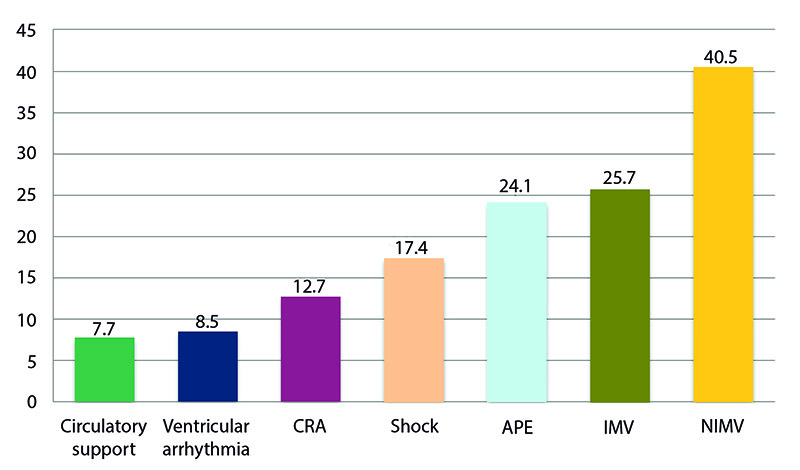Volume 115, Nº 2, August 2020
DOI: https://doi.org/10.36660/abc.20190166
ORIGINAL ARTICLE
Takotsubo Multicenter Registry (REMUTA) – Clinical Aspects, In- Hospital Outcomes, and Long-Term Mortality
Gustavo Luiz Gouvêa de Almeida Junior
João Mansur Filho
Denilson Campos de Albuquerque
Sergio Salles Xavier
Álvaro Pontes
Elias Pimentel Gouvêa
Alexandre Bahia Barreiras Martins
Nágela S. V. Nunes
Lilian Vieira Carestiato
João Luiz Fernandes Petriz
Armando Márcio Gonçalves Santos
Bruno Santana Bandeira
Bárbara Elaine de Jesus Abufaiad
Luciana da Camara Pacheco
Maurício Sales de Oliveira
Paulo Eduardo Campana Ribeiro Filho
Pedro Paulo Nogueres Sampaio
Gustavo Salgado Duque
Luiz Felipe Camillis
André Casarsa Marques
Francisco Carlos Lourenço Jr.
José Ricardo Palazzo
Cláudio Ramos da Costa
Bibiana Almeida da Silva
Cleverson Neves Zukowski
Romulo Ribeiro Garcia
Fernanda de Carvalho Zonis
Suzana Andressa Morais de Paula
Carolina Gravano Ferraz Ferrari
Bruno Soares da Silva Rangel
Roberto Muniz Ferreira
Bárbara Ferreira da Silva Mendes
Isabela Ribeiro Carvalho de Castro
Leonardo Giglio Gonçalves de Souza
Luiz Henrique dos Santos Araújo
Alexandre Giani

Figure 2 – Medications used during hospital stay. ACEI: angiotensin converting enzyme inhibitors; ARB: angiotensin receptor blockers.
Abstract
Background: Takotsubo syndrome (TTS) is an acquired form of cardiomyopathy. National Brazilian data on this condition are scarce. The Takotsubo Multicenter Registry (REMUTA) is the first to include multicenter data on this condition in Brazil.
Objective: To describe the clinical characteristics, prognosis, in-hospital treatment, in-hospital mortality, and mortality during 1 year of follow-up.
Methods: This is an observational, retrospective registry study including patients admitted to the hospital with diagnosis of TTS and patients admitted for other reasons who developed this condition. Evaluated outcomes included triggering factor, analysis of exams, use of medications, complications, in-hospital mortality, and mortality during 1 year of follow-up. A significance level of 5% was adopted.
Results: The registry included 169 patients from 12 centers in the state of Rio de Janeiro, Brazil. Mean age was 70.9 ± 14.1 years, and 90.5% of patients were female; 63% of cases were primary TTS, and 37% were secondary. Troponin I was positive in 92.5% of patients, and median BNP was 395 (176.5; 1725). ST-segment elevation was present in 28% of patients. Median left ventricular ejection fraction was 40 (35; 48)%. We observed invasive mechanical ventilation in 25.7% of cases and shock in 17.4%. Mechanical circulatory support was used in 7.7%. In-hospital mortality was 10.6%, and mortality at 1 year of follow-up was 16.5%. Secondary TTS and cardiogenic shock were independente predictors of mortality.
Conclusion: The results of the REMUTA show that TTS is not a benign pathology, as was once thought, especially regarding the secondary TTS group, which has a high rate of complications and mortality. (Arq Bras Cardiol. 2020; 115(2):207-216)
Keywords: Cardiomyopathy, Dilated; Cardiomyopathy Takotsubo/mortality; Heart Failure; Stress, Psychological; Chest Pain; Dyspnea; Multicenter Study.















